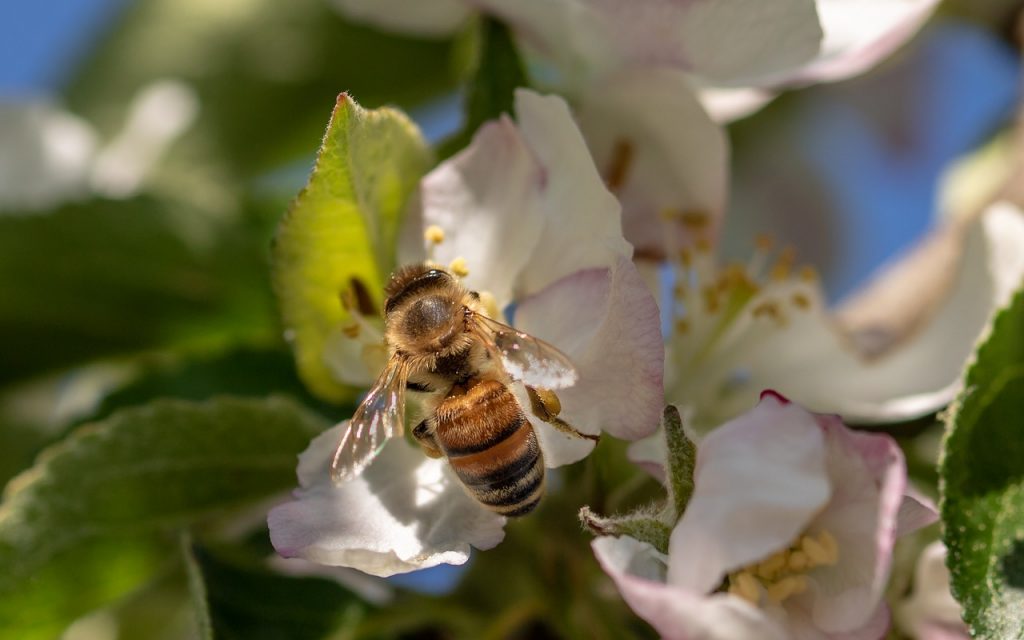Do Bees Sleep?

Bees are busy. But are they too busy to sleep?
Many people are under the misconception that bees don’t sleep. They think that bees spend their days and nights foraging for nectar and pollen, taking care of their young and serving the queen. These little creatures are so amazing they must not need rest, right?
Wrong! While honey bees do keep busy, they are not unlike us. They need sleep to recharge and restore their bodies, so they have the energy to support their families. All bees sleep, but the amount and location of their sleep changes depending on their role in the colony.
In fact, recent studies have found that the sleep patterns of some bees are not unlike those of human parents. Brooding bumblebees give up sleep to take care of the pupae. The pupae don’t need much attention; yet, the older bees forgo rest to prepare and care for the brood.
The lives of bees are endlessly fascinating, even when they are sleeping! If you are curious about the sleeping habits of bees, read on to learn why, where and when honey bees rest. We think you will find that they really aren’t much different than us!
Why Do Honey Bees Sleep?
Just like us humans, bees need sleep to replenish their energy and restore their bodies so they can continue to perform their jobs in the hive. Without proper rest, their ability to do necessary bee activities can decline and put the entire colony at risk. Sleep allows the bees to recover from the rigors of their work and successfully do jobs such as:
- Foraging for pollen, nectar and water
- Navigating to and from the hive to valuable sources of water, pollen and nectar
- Communicating with other members of the colony
- Defending the colony from predators
- Caring for the brood
- Cleaning the cells of the hive
What does a sleeping bee look like, anyway?
Great question! A sleeping bee will take on a relaxed posture, much like we do when we rest. Sleeping honey bees will drop their upper body and antennae and rest their wings on their thorax. Even their brains react to sleep in similar ways as humans. The deeper the sleep, the more stimulus it will take to wake them up.
Where Do Bees Sleep?
Research has found that where a bee sleeps has a lot to do with their role in the colony. Foragers, for example, typically sleep around the outer edges of the hive. This position gives them quick access to the exit so they can defend the hive if needed. It also gives them a little peace and quiet, away from the hustle and bustle in the interior areas of the hive. Some foragers have even been found sleeping soundly in flowers!
Other bees, such as nurses and cleaners, tend to sleep in the central cells of the hive closer to the brood and queen. As you can imagine, these bees don’t get quite as much sleep as the foragers.
When Do Bees Sleep?
Younger bees take on the jobs of hive cleaners, nurses and storers. These bees typically get their sleep in the form of power naps. The youngest bees will take frequent, short naps throughout the day and night in between their cleaning duties. The nurses and storers nap as well, but not as often as the youngest bees in the hive. This particular sleep pattern allows them to get the rest they need while still keeping up with their demanding duties.
As the older bees in the colony, foragers get the most rest of all. Their sleep patterns are most similar to those of humans. Forager honey bees spend their days working hard to supply the colony with water, pollen and nectar. At night they enjoy one long sleep session, rather than the frequent short naps of the younger bees.
Yes, honey bees need their beauty rest!
Bees have very specific sleep patterns based on their age and job in the hive. This shouldn’t be too surprising since honey bee colonies are like well-oiled machines. Like most other living beings, bees need rest to have the energy to do their work and take care of their families. Just one more amazing fact about the honey bee!
